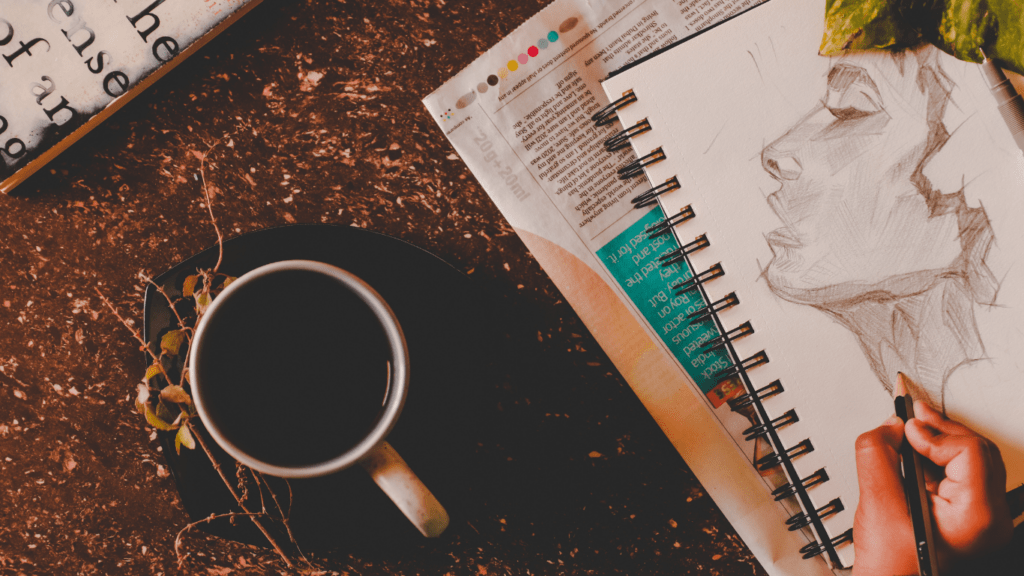Understanding Art Therapy
Art therapy integrates creative processes to help individuals navigate complex emotions. By using artistic techniques, people gain insights and advance their healing journey.
What Is Art Therapy?
Art therapy is a form of psychotherapy. It involves creating art to improve mental, emotional, and psychological well-being. Trained therapists guide clients through drawing, painting, or sculpting. These creative exercises often reveal hidden emotions and foster self-awareness. The American Art Therapy Association defines art therapy as a tool for improving cognitive and sensory-motor functions.
The Connection Between Art and Healing
Art has profound healing properties. Engaging in artistic activities helps manage stress, anxiety, and depression. Creative processes trigger the brain’s reward system, releasing dopamine, improving mood, and reducing pain.
Studies show that art therapy enhances emotional resilience by giving people an outlet for expressing traumatic experiences non-verbally. Trauma can cause blockages in expressing feelings; art breaks these barriers.
The Role of Art Therapy in Trauma Recovery

Art therapy plays a critical role in trauma recovery by offering a safe space for individuals to express and process challenging experiences.
Expressing Unspoken Emotions
Art therapy helps individuals express emotions that are difficult to articulate. Trauma often locks emotions within, which becomes only more complex with time.
Through drawing, painting, or sculpting, individuals can externalize these internal feelings. For example, a person might create a piece that visually represents their pain. This creative expression bypasses verbal barriers, fostering a deeper understanding of their emotions.
Facilitating Mindfulness and Presence
Engaging in art therapy activities promotes mindfulness, which is essential in trauma recovery. Creating art requires focus and presence, helping individuals remain grounded in the moment. When painting or drawing, for instance, one’s attention shifts from distressing memories to the artistic process.
This mindful engagement reduces anxiety and stress, allowing individuals to develop a sense of calm and well-being. Through repeated practice, it enhances emotional regulation and resilience.
Techniques Used in Art Therapy for Trauma
Art therapy incorporates various techniques to address trauma, each method offering unique benefits for emotional and psychological healing.
Painting and Drawing
- Painting and drawing allow individuals to visually express emotions and memories.
- These techniques provide a non-verbal form of communication that can help bypass the limitations of language.
- By choosing colors, lines, and shapes, individuals can convey complex feelings and experiences.
- Abstract painting can represent inner turmoil, while detailed drawings might reflect specific traumatic events.
- Engaging in these activities fosters a sense of control and self-regulation, which is crucial for trauma recovery.
Sculpture and Clay Work
Sculpture and clay work offer a tangible way to process trauma. These techniques engage the hands and the mind, grounding individuals in the present moment.
Shaping clay or creating sculptures helps externalize internal struggles, making them more manageable. This process can be particularly beneficial for those who find verbal expression challenging. For instance, molding a lump of clay can transform chaotic emotions into structured forms, providing a sense of accomplishment and relief.
Benefits of Art Therapy for Trauma Survivors
Art therapy provides numerous benefits for trauma survivors, enhancing their emotional, psychological, and social well-being uniquely and effectively.
Emotional Release and Self-Discovery
Art therapy offers an emotional outlet for trauma survivors. By engaging in creative activities, individuals can release pent-up emotions through non-verbal expression.
For instance, painting or drawing allows survivors to project their inner turmoil onto a canvas, alleviating psychological burdens. This process helps them uncover suppressed feelings and facilitates self-discovery, revealing subconscious thoughts and emotions they might struggle to articulate verbally.
Building Coping Skills and Resilience
Art therapy aids in building coping skills, crucial for trauma recovery. Creative tasks enhance problem-solving abilities, providing new strategies for managing stress and anxiety.
By working with various materials or completing complex projects, individuals develop resilience. For example, sculpting or working with clay requires patience and focus, fostering perseverance. These activities teach survivors to stay grounded and centered, improving their overall mental health and ability to face everyday challenges.
Real-Life Success Stories
Art therapy transforms lives, offering hope and healing for trauma survivors through creative expression.
Case Studies and Personal Anecdotes
Several compelling case studies demonstrate art therapy’s effectiveness in trauma recovery. For example, a combat veteran with PTSD found relief through painting. By expressing fear and anger on canvas, he processed his experiences and achieved emotional release. An abuse survivor used sculpture to represent her trauma and rebuilt her sense of control and self-esteem.
Personal anecdotes echo these successes. A teenager dealing with the aftermath of a natural disaster found solace through drawing. The drawings helped her communicate her pain and fear, fostering resilience. Another individual recovering from childhood trauma used mixed media to explore suppressed emotions, resulting in significant breakthroughs in therapy sessions.
These stories highlight the diverse ways art therapy aids trauma survivors. They illustrate how engaging in creative activities like:
- painting
- drawing
- sculpting
can lead to profound emotional and psychological healing.

 Anna Freehill, a key contributor to Avant Garde Artistry Hub, plays a vital role in shaping the platform’s vision. As an author and collaborator, she helps bridge the worlds of art and technology, offering insightful articles that guide artists through the rapidly evolving creative landscape. Anna’s dedication to highlighting art's therapeutic value has contributed to the platform’s focus on mental and emotional well-being through creative expression.
Her involvement in building Avant Garde Artistry Hub has been instrumental in providing valuable resources to artists seeking to enhance their careers. Whether through her writing on business strategies or her support in platform development, Anna is committed to fostering a space where artists can thrive and embrace the future of art.
Anna Freehill, a key contributor to Avant Garde Artistry Hub, plays a vital role in shaping the platform’s vision. As an author and collaborator, she helps bridge the worlds of art and technology, offering insightful articles that guide artists through the rapidly evolving creative landscape. Anna’s dedication to highlighting art's therapeutic value has contributed to the platform’s focus on mental and emotional well-being through creative expression.
Her involvement in building Avant Garde Artistry Hub has been instrumental in providing valuable resources to artists seeking to enhance their careers. Whether through her writing on business strategies or her support in platform development, Anna is committed to fostering a space where artists can thrive and embrace the future of art.